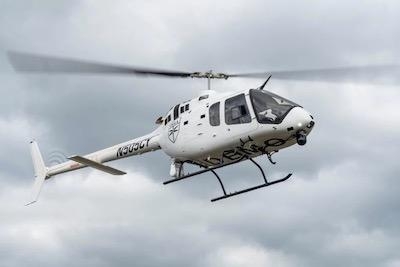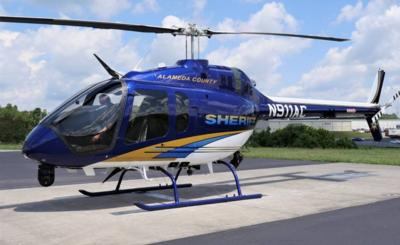AD 2021-06-06 Prompted By The Determination That Visual Inspections Do Not Adequately Detect A Crack
The FAA is superseding Emergency Airworthiness Directive (AD) 2021-05-52 which applied to certain Bell Textron Canada Limited (Bell) Model 505 helicopters.

Emergency AD 2021-05-52 required a one-time visual inspection of the pilot collective stick and grip assembly (pilot collective stick), a fluorescent penetrant inspection (FPI) if no crack was found during the visual inspection, and depending on the inspection results, removing the pilot collective stick from service and reporting certain information to Bell. Emergency AD 2021-05-52 also prohibited installing any pilot collective stick on any helicopter unless the inspections had been accomplished. This AD removes the visual inspection of the pilot collective stick, requires repetitive FPIs of the pilot collective stick, and requires revising the existing Rotorcraft Flight Manual (RFM) for your helicopter. This AD retains the reporting requirement and expands the prohibition. This AD was prompted by the determination that visual inspections do not adequately detect a crack and additional findings that a crack may occur sooner than previously expected. The FAA is issuing this AD to address the unsafe
condition on these products. This AD becomes effective March 31, 2021.
Supplementary Information: On February 22, 2021, the FAA issued Emergency AD 2021-05-52 (Emergency AD 2021-05-52), which was made immediately effective to all known U.S. owners and operators of Bell Model 505 helicopters, serial numbers 65011 and subsequent. Emergency AD 2021-05-52 required, before further flight, removing the pilot collective stick from the jackshaft assembly, cleaning it, and then visually inspecting the complete circumference of certain areas for a crack. If the visual inspection did not reveal a crack, Emergency AD 2021-05-52 required performing an FPI for a crack. Removing from service any cracked pilot collective stick was required before further flight, and if a crack was discovered, reporting certain information to Bell was required within 10 days.

Emergency AD 2021-05-52 was prompted by Canadian Emergency AD CF-2021-05, dated February 21, 2021 (Canadian AD CF-2021-05), issued by Transport Canada, which is the aviation authority for Canada, to correct an unsafe condition for Bell Model 505 helicopters, serial numbers 65011 and subsequent. Transport Canada advised of a report that a pilot collective stick cracked above the cabin floor at the junction with the collective jackshaft. This finding occurred prior to engine start during the pilot pre-flight check of flight controls for travel. The exact cause of the crack was still under investigation, and Transport Canada advised that the unsafe condition, if not addressed, could result in failure of the pilot collective stick and subsequent loss of control of the helicopter.
Accordingly, Canadian AD CF-2021-05 required a one-time visual inspection and as applicable, an FPI of the pilot collective stick to detect cracking. If the pilot collective stick was found to be unserviceable, Canadian AD CF-2021-05 required replacing the collective stick with a serviceable part prior to further flight. Transport Canada advised that a serviceable collective stick is a new collective stick or a collective stick with no crack found during the visual inspection or FPI required by its AD. Transport Canada considered Canadian AD CF-2021-05 an interim action and stated that further AD action may follow.
 Unfortunate... ANN/SportPlane Resource Guide Adds To Cautionary Advisories
Unfortunate... ANN/SportPlane Resource Guide Adds To Cautionary Advisories ANN FAQ: Turn On Post Notifications
ANN FAQ: Turn On Post Notifications ANN's Daily Aero-Term (04.29.24): Visual Approach Slope Indicator (VASI)
ANN's Daily Aero-Term (04.29.24): Visual Approach Slope Indicator (VASI) ANN's Daily Aero-Term (04.28.24): Airport Marking Aids
ANN's Daily Aero-Term (04.28.24): Airport Marking Aids ANN's Daily Aero-Linx (04.28.24)
ANN's Daily Aero-Linx (04.28.24)




